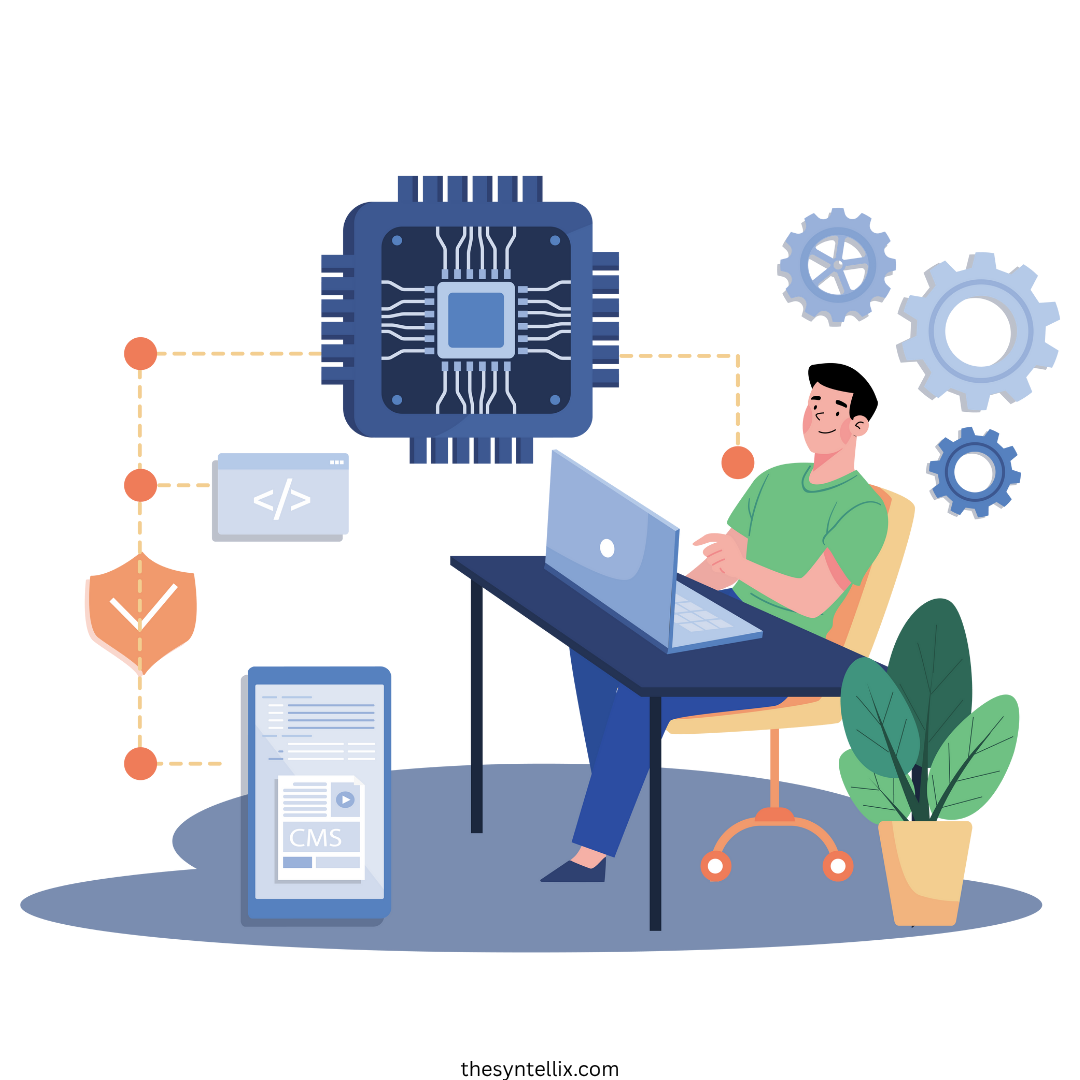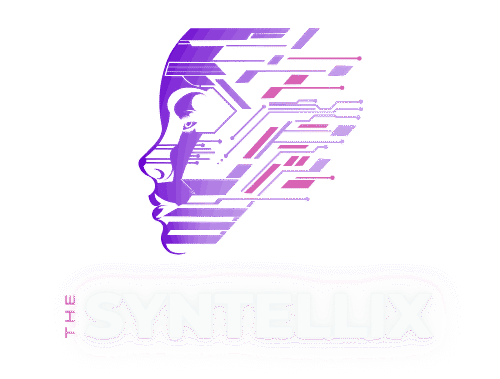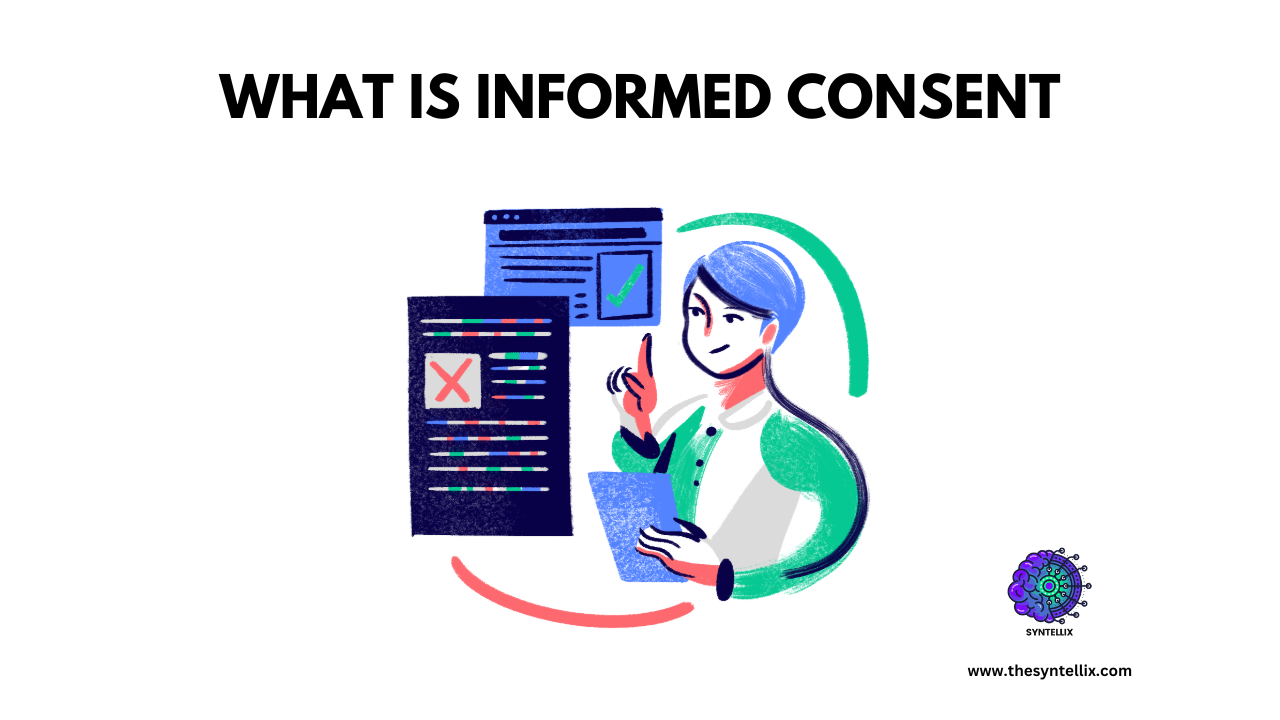You have done it a hundred times: clicked “I Agree” without reading the terms and conditions. Informed consent in AI is not just a checkbox, it is the bedrock of ethical technology. As AI systems handle everything from your health data to your daily commute, users demand clarity on how their information is used. This blog explores why informed consent is non-negotiable, how it’s reshaping industries, and how can we make these systems.
What Is Informed Consent In AI?
The informed consent in ai simply means to tell people clearly how their data will be used by AI and also giving them the right to say yes or no. It is about letting people decide to what they want to do with their privacy.
For example, when you go to doctor’s clinic for treatment, before they run test or give you medicine they will explain your health condition to you and ask whether you are satisfied with the examination or not? If you are satisfied then they will give you medicine. This is the real example of informed consent in our daily life. It is about to give respect, transparency, and freedom to people. No secrets. No tricks.
As we know AI leans and trains itself from our data like photos, videos, voice, medical records or our online history. That is ok, but if is uninformed, then:
- AI can use our personal data without asking.
- AI can make decisions that can effect our lives like hiring or giving loan etc.
- AI can learn from our personal data that we dont want AI to learn like bank transactions without our consent.
Instead of this AI should use our data with informed consent which means that:
- What kind of data is being collected?
- Why it is being collected?
- How it will be used?
- Will it be shared with others?
- What risks are involved?
- And whether they can opt out?
Then we can decide: Do we agree, or not?
What Makes Consent “Informed”?
To be truly informed, consent must be:
- Clear – No legal mumbo-jumbo. Say it in plain language.
- Voluntary – Not forced. No “agree or you can’t use this app” tricks.
- Specific – Not vague. Say exactly what will happen with the data.
- Revocable – People should be able to change their minds later.
Informed consent protects your rights. It helps you stay in charge of your data and your decisions. Informed consent in AI means to give respect to people, not just using their data.
Laws Around Informed Consent
Informed consent laws protect people when companies collect or use their personal data. These laws say: you (AI systems) must clearly tell people what you are doing, and they must agree before you do it.
Let’s look at the main laws around the world that focus on informed consent:
🇪🇺 1. GDPR (General Data Protection Regulation – Europe)
The GDPR is the strongest privacy law in the world. It applies to anyone handling data from people in the European Union.
The law says:
- You must tell people exactly what data you collect and why.
- You must ask for clear and specific permission.
- People must give consent freely (no tricks or hidden boxes).
- People must be able to change their mind and withdraw consent anytime.
Example: If you use cookies to track visitors on a website, GDPR says you must show a cookie notice and ask for consent.
🇺🇸 2. CCPA & CPRA (California, USA)
The California Consumer Privacy Act (CCPA) and the updated California Privacy Rights Act (CPRA) give strong data rights to Californians.
These laws say:
- You must inform users what data you collect.
- You must allow users to opt out if they don’t want their data sold.
- You must give users a way to delete their data if they ask.
Note: Unlike GDPR, CCPA doesn’t always require permission first, but it does require clear notice and opt-out options.
🇧🇷 3. LGPD (Brazil’s Data Law)
Brazil’s Lei Geral de Proteção de Dados (LGPD) is similar to GDPR.
It says:
- You must explain how and why you collect data.
- You must get clear consent before collecting or using sensitive data.
- People can access, correct, or delete their data.
🇨🇦 4. PIPEDA (Canada)
Canada’s PIPEDA law applies to private businesses.
The rules include:
- You must get meaningful consent.
- You must use clear language—not legal jargon.
- You must tell users how their data will be used and stored.
🇮🇳 5. DPDP Act (India’s Digital Personal Data Protection Act)
India’s new DPDP Act gives users strong data rights.
It says:
- You must get consent before collecting data.
- You must only use data for the purpose you mentioned.
- Users have the right to access, update, and delete their data.
Informed consent laws are becoming stronger around the world. Whether you run a website, an app, or an AI system, you must follow these laws if you handle user data.
Always:
- Ask for permission clearly.
- Explain what you’re doing in simple language.
- Give users control over their data.
Why Informed Consent Matters In AI
1. User Control in the Age of AI
People no longer want to just say “yes” to everything. A 2025 Pew Research study found that 81% of users want more detailed control over how their data is used by AI or any other organization.
For example, MediGuard AI, a healthcare app, lets patients choose exactly how their health records are used—like allowing their data for cancer research, but not for things like insurance checks. This gives people more power over their own information.
2. Following the Law
New laws, like GDPR 2.0 and the California AI Privacy Act, say companies must clearly ask for permission using simple language—before using your data with AI. If they don’t, they can be fined a lot of money. In 2024, a company called SocialTrack AI was fined $50 million for secretly using people’s face data from smart cameras.
3. Trust as a Competitive Edge
When brands are open and honest, they do better. A report from 2025 showed that 64% of people trust companies that clearly ask for permission before using their data. For example, Adobe’s Sensei gained loyal customers by letting them say no to ads based on their browsing habits.
Real-World Applications of Informed Consent
Healthcare: Ethical Data Stewardship
Hospitals use platforms like HealthConsent AI to explain how patient data trains diagnostic models. Patients receive video summaries of data usage, reducing anxiety. The WHO’s 2025 Guidelines mandate such practices globally.
Smart Devices: No More Hidden Agendas
Amazon’s Halo 2025 openly shares how voice data improves its emotion-detection AI. Users can opt out of specific features, like stress analysis, without losing core functionality.
Marketing: Respecting Boundaries
Tools like Nielsen’s AI Audience let users choose which browsing habits fuel ad targeting. “We saw a 30% drop in opt-outs after simplifying consent forms,” says CEO Sarah Lin.
How to Implement Ethical Consent in AI Systems
Imagine you are having a conversation with a robot. Before it listens to you, it politely asks, “Do you agree to talk to me and share your thoughts?” That is what we mean by ethical consent in AI — making sure the AI respects people’s choices and privacy, just like a good human would.
Let’s explore how we can build this into AI systems, step by step.
1. Start With Clear Communication
Just like we don’t sign contracts we don’t understand, people should not agree to something confusing.
AI systems must clearly explain:
- What data they will collect.
- Why they need it.
- How it will be used.
- If it will be shared.
This explanation should be in simple, friendly language — not legal jargon. Think of it like a robot saying:
“Hi! I’d like to use your voice to learn how people speak. Is that okay?”
2. Make Consent a Choice, Not a Trap
Consent should be freely given — no tricks, pressure, or fine print.
Ethical AI must:
- Let users say “no” without punishment.
- Give options like “yes, but only for this purpose”.
- Allow users to change their mind anytime.
So instead of one “Accept All” button, people might choose:
☑ Yes, you can use my data for helping others.
☐ No, don’t use it for ads.
3. Keep Consent Ongoing
Consent is not a one-time handshake. It is more like checking in with a friend.
Good AI systems will:
- Remind users about what’s happening.
- Ask again if anything changes.
- Show a simple way to withdraw consent.
Think of a reminder like:
“Just checking — we’re still using your photos to improve our app. Do you want to continue?”
4. Respect Vulnerable Groups
Children, older adults, or people with less tech experience may not fully understand what they are agreeing to.
Ethical AI should:
- Use extra clear visuals or voice guidance.
- Ask for guardian approval if needed.
- Be careful not to trick or confuse.
It is like making sure a child knows what it means to “share their toy” — not just clicking a button.
5. Record and Review Consent
AI systems should remember who said yes (and when) — but only the bare minimum needed.
They must:
- Keep consent logs secure and private.
- Let users see or delete their consent history.
- Regularly audit their systems for abuse or errors.
This helps ensure honesty and build trust.
6. Build Consent Into the Code
Ethical consent should not be an afterthought. It should be part of the AI’s design from the beginning.
That means:
- Designing apps with “privacy by default”.
- Adding permissions checks before using data.
- Using AI that can explain what it is doing and why.
Giving consent is more than clicking a box. It’s about respecting people’s freedom and dignity in the age of machines.
If we want AI to be trusted, it has to ask nicely, listen carefully, and accept no for an answer.
Conclusion
Giving clear consent in AI is not just the right thing to do—it is a must. Whether it’s used in hospitals or ads, being honest helps people trust AI and avoid legal trouble. People using AI should ask for clear answers, and the people building AI should make sure they give them.
Call to Action:
Audit your AI tools today. Does your smart speaker explain its data hunger? Check out the EU’s Dynamic Consent Framework to stay compliant.
People Also Ask
What is informed consent in AI?
It ensures users understand and agree to how their data is collected, used, and shared by AI systems.
How does GDPR 2.0 affect AI?
It mandates explicit, granular consent for data practices, with fines up to 8% of global revenue for violations.
Can I revoke consent after agreeing?
Yes! Ethical platforms like EverConsent let you update preferences anytime.

Stay ahead of the curve with the latest insights, tips, and trends in AI, technology, and innovation.

